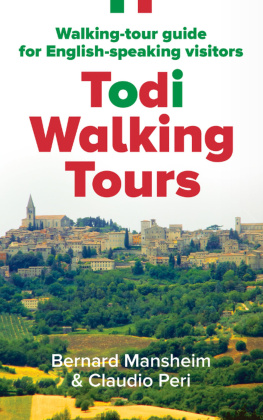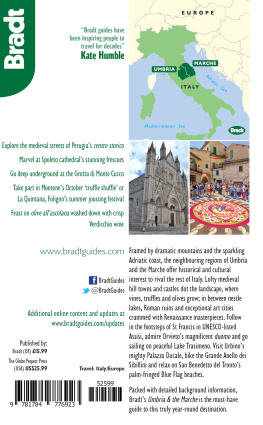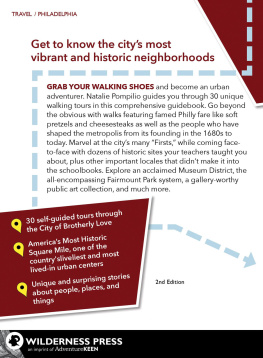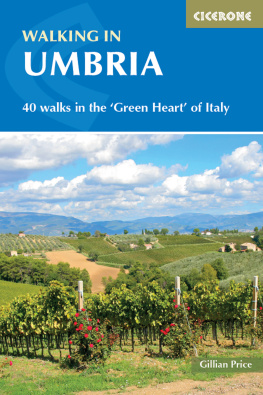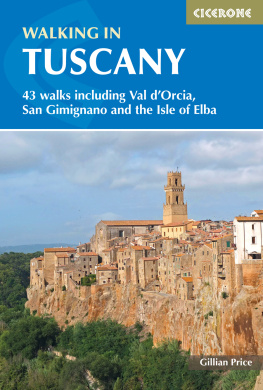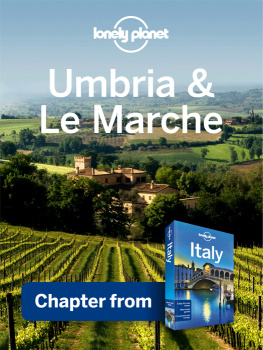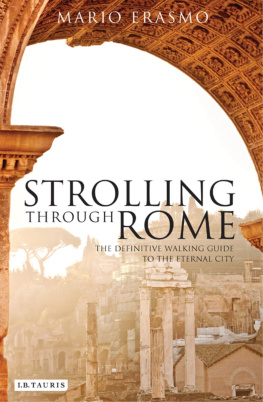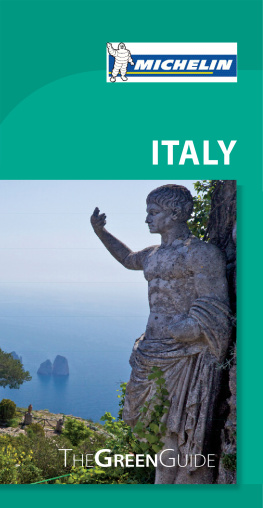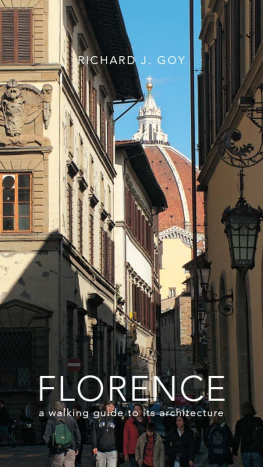Preface
S ix years ago, my wife Denise and I spent a month in Todi. We lived in a small apartment and had no car, television or radio, and only occasional access to the Internet. We came to Todi to receive tutoring in Italian at the school called La Lingua, La Vita . Each day we spent two hours as beginners learning Italian. The rest of the time, we explored this enchanting Umbrian hill town and its environs using the only transportation available to usour feet.
In fact, the Italian lessons were really an excuse for us to experience this remarkable place. We had been to Todi twice before on cycling trips, then took a walking trip through Umbria. Each of those visits was too brief. But our fascination had kindled a spark: We thought it would be interesting to become immersed in the history and daily life of Todia hill town built of quarried stonethat has existed for nearly three millennia.
On a typical sunny, early July morning, we had taken our daily long walk outside the walls of Todi and through the sunflower fields. After several months of green growth, the surrounding valleys had suddenly exploded into profusion, a sea of yellow, as the sunflower blossoms matured. The plants stood tall and erect, a disciplined army facing east to catch the sun. Their sudden appearance was nothing short of spectacular.
We re-entered town that morning through the Porta Perugina and began the steep walk back up to the central piazza . As we toiled up the street, we overcame a woman walking the same route at a comfortable pace. She smiled and said, Buongiorno.
In our best Italian accent, we replied, Buongiorno, Come sta?
She responded, Bene, e voi?
We answered, Molto bene, thrilled that such a few musical Italian words could create a new friendship.
She walked with us up the hill along the ancient, narrow cobblestone streets, and we talked back and forth. Teresa, our new friend, spoke a little English; we spoke even less Italian. Nevertheless, during our twenty-minute walk we discovered that her son was a professor of Economics at the same University of California campus where our daughter was a graduate student in Physics. We learned that Teresa and her husband, Claudio, were both natives of Todi, but that they had lived most of their adult life in Milan, as did their other two grown children.
Denise and I did our best to describe how wonderful our month-long sojourn had been, and that we had mixed feelings about it coming to an end. We freely admitted that Todi was an enchanting place. As we reached our favorite caff in the central piazza, Teresa invited us to visit their ancestral home, where they had returned for decades during weekends and for vacations.
We rounded a corner near the duomo (cathedral), and reached a stone wall. Teresa, having forgotten her keys, called out to Claudio, who unlocked the front entrance that led to their garden. Claudio welcomed us as fast friends and we marveled at his excellent command of English. The four of us shook hands and shared a good-bye Arrivederci!, mutually hoping we would cross paths again.
Well, we did. Since then Denise and I have returned to Todi annually. As our friendship grew, Claudio and I noodled about the idea of sharing the uniqueness of Todi with a wider audience. This book is the product of our collaboration. Claudio and I, like our wives, share a love of Todi. My contribution to this endeavor is to write for the English-speaking tourist. The guide has been thoroughly enriched by the depth of experience and knowledge of Todi, and more broadly, of Italy, that was contributed by Claudio. We had a great time writing it. We both hope you enjoy your visit.
Bernard Mansheim
Introduction
T odi is a town in Umbria, one of four land-locked regions of the twenty defined regions of Italy. Umbria is located in the very center of Italy and the hill town Todi is in the center of Umbria. Three other regions border Umbria: Tuscany to the north and west, Marche to the east, and Lazio to the south. This rural, peaceful, lush region has been called il cuore verde dItalia the green heart of Italy. (Further discussion of the geographic features of this special place are detailed in Part I, Chapter 1).
The earliest known inhabitants of Umbria were the Umbri people, after whom the region was named. Little is known about the Umbri except for evidence that they colonized central and northern Italy as far back as the Bronze Age, at least 1,000 BC. History tells us that the Etruscans invaded the area between 700-500 BC, but the two peoples seem to have co-existed until the Roman invasion about 300 BC.
Before the Romans, the Etruscans mainly settled the land west of the Tiber River, while the Umbrians remained on the eastern side. Todi played a special role during this time, as it interfaced between the two cultures.
With the collapse of the Roman Empire in the 5 th century AD, Umbria came under the control of a succession of invading conquerors. When Charlemagne was crowned emperor of the Holy Roman Empire in AD 800, all of Italy and much of western Europe became unified. At that time, Umbria was declared part of the Papal States. Todi was one of many cities throughout Italy that became somewhat autonomous and were known as comuni (municipalities).
For the next ten centuries, the papacy ruled, except for a few decades of Napoleonic rule in the early 1800s. In 1861, Italy became unified as a kingdom, and Umbria was named one of the twenty administrative divisions, known as regioni .
As a consequence of the long papal domination, the Catholic religion had a major influence on the culture of Todi. The religious and cultural movements led by Saint Francis and Saint Clare of Assisi, only thirty miles north, reached Todi. Fra Jacopone, arguably the most famous religious poet in Italian history, was a Todi native and followed the mystic tradition of the 13 th century.
It is widely known that all of Italy is filled with historic remnants and artifacts dating back nearly 3,000 years. Scattered ruins throughout the country have been found and attributed to the Umbrians, Etruscans, Romans, and other populations and civilizations throughout history. What, then, makes Todi special?
The Umbrian hill town known as Todi serves as the very embodiment of Italian history and culture in a number of ways. Its geographic location, precisely in the center of Italy, had major significance over the millennia, and will be detailed in a later chapter. Of particular note, Todi evolved at the crossroads of six civilizations: Umbrian, Etruscan, Roman, Christian, Medieval, and Renaissance!
Three concentric sets of walls that define the three major historic erasEtruscan, Roman, and Medievalsurround Todi. However, the Etruscan walls were subsumed by the Romans, who used Etruscan stonework to establish their formidable walls. Thus, to be accurate, two easily identifiable sets of walls can be seen today.
Despite expansion of Todis population over the past century, virtually all the newer buildings have been constructed below the lower ring of walls that circumscribe the old city. Thus, Todi has retained a historic structural integrity that is arguably the most untarnished among all the ancient towns of its size in Italy. Though today the existing buildings in the old city almost uniformly reflect construction during the medieval and Renaissance ages, they were built on top of the Roman city, which was in turn built over the original Umbrian/Etruscan city.
As implied above, logically the construction of massive stone monuments during a given civilization was generally preceded by destruction of monuments of the previous civilization, so that the stones and building artifacts that had been laboriously hauled up the long hill could be re-purposed. Following the end of the Roman era, those same elements were used to build the new wall, the palazzi (palaces) , other housing, churches, and public buildings.

